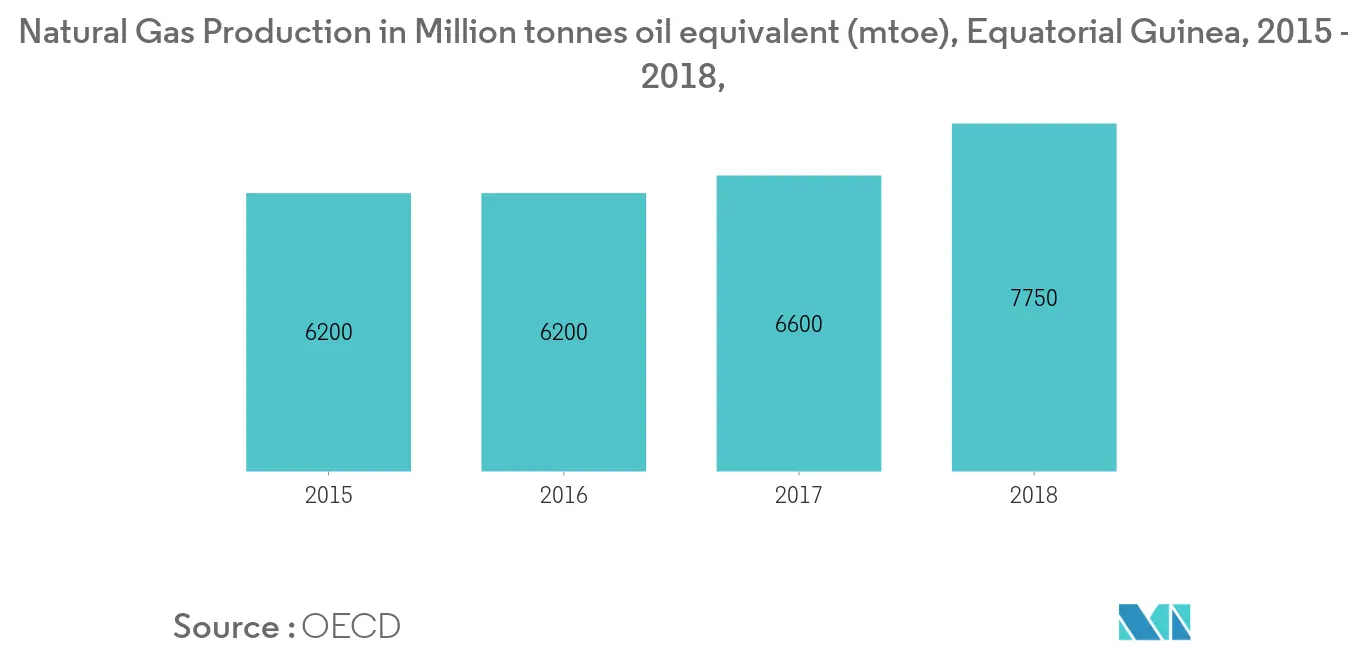Market Trends of Equatorial Guinea Oil and Gas Midstream Industry
Pipeline Sector to Witness Growth
- Production of gas in Equatorial Guinea increased significantly by 5.73%, year-on-year, from 6200 million cubic meters, in 2015 to 7750 million cubic meters, in 2018.
- In 2019, the Ministry of Mines and Hydrocarbons in Equatorial Guinea approved a 100 million USD offshore gas pipelay award to Saipem. The 70-km, 950 million standard cubic feet per day (mmscfd) capacity pipeline will take gas from the Noble Energy-operated offshore Alen field to the onshore Punto Europa LNG complex at Bioko Island.
- The Bioko terminal is proposed to include 22 storage tanks with a total capacity of 1.2 million cubic meters. A deal with Saudi Arabian companies did not go through in 2018, but the government is looking for other investors for the project.
- Hence, pipeline capacity is expected to increase slightly during the forecast period due to an increase in the production of natural gas.
Decreasing Oil Production to Restrain the Market
- Consumption of natural gas decreased in the region, by 5.2%, year-on-year, from 5,200 barrels per day (bpd), in 2016 to 4,916 bpd, in 2019. Decreasing economic activity in the country is one of the major reasons for the steep decline.
- The oil production declined in the country, by 7.91%, year-on-year, from 12.1 million metric ton, in 2015 to 8.7 million metric ton, in 2018. Decreasing production of oil in the country, which is also its main exporting commodity, caused fiscal restriction on the government of Equatorial Guinea.
- The Zafiro field, operated by ExxonMobil, remains the country's largest source of oil output and export. However, average production declined to around 90,000 barrels per day (bpd) in 2019 from a peak of 280,000 bpd in 2004.
- However, the Equatorial Guinea oil and gas midstream industry is expected to grow slightly during the forecast period due to the expected increase in production as new fields are further produced.




